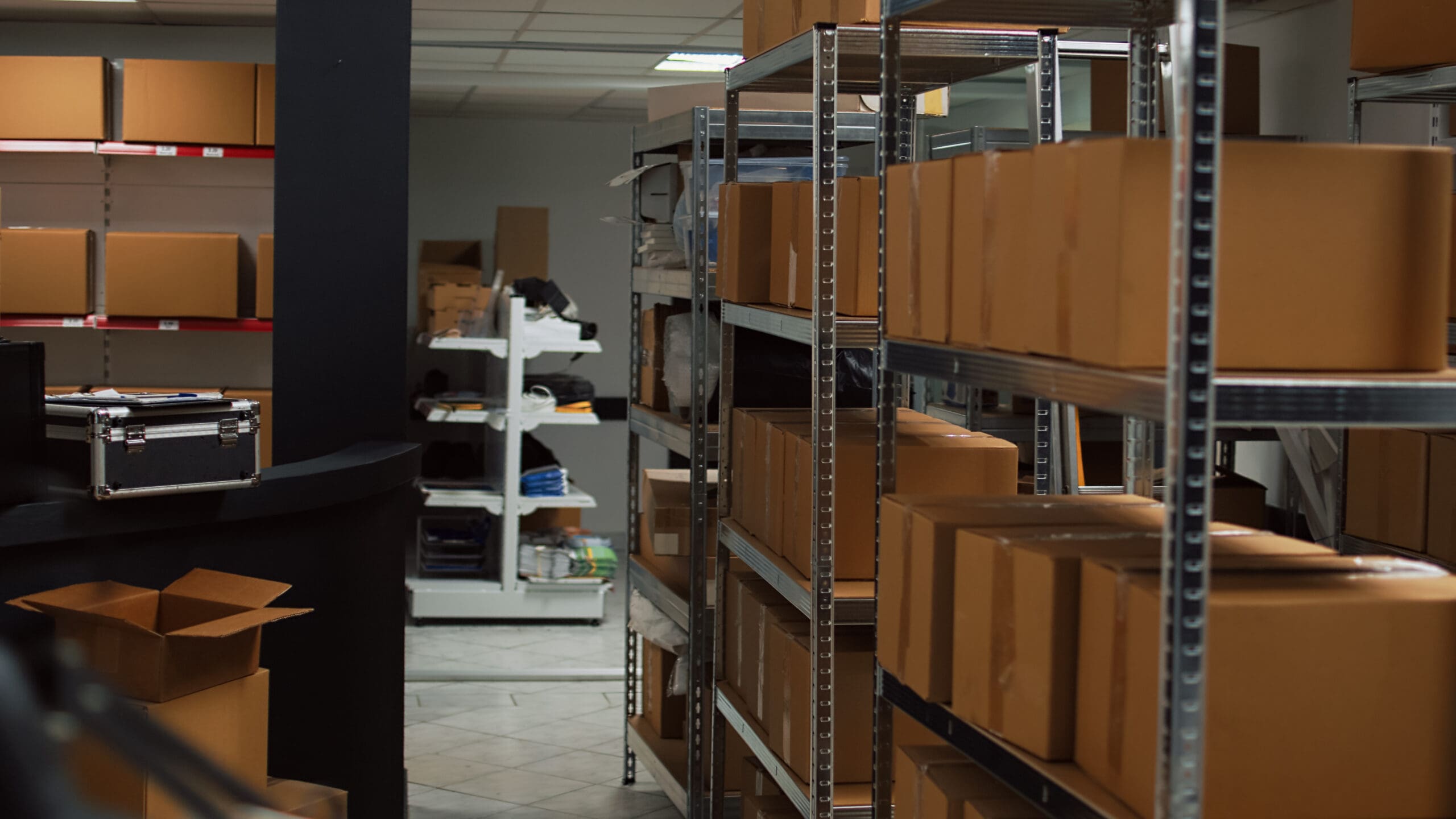Did you know that there are several startup financing options available to different kinds of businesses? After all, even the most successful companies struggle with poor cash flow from time to time. Without sufficient cash flow, businesses are forced to cut costs which could limit their growth opportunities.
As a business owner, wouldn’t it be great to have some sort of financial cushion that can be used to purchase additional goods to meet customer demand? The good news is that there are easily obtainable loans out there that businesses can access at any given time. One of them is inventory financing.
What is inventory financing?
Inventory financing is an asset-based loan simply based on the value of your inventory. This type of short-term financing enables businesses to use their inventory as leverage in getting either a term loan or a revolving line of credit. Inventory financing is often used by small to medium-sized businesses to support them through seasonal cash flow fluctuations while also ensuring that their most popular items are always on stock.
When applying for an inventory financing loan, one of the most important things to take into account is your inventory’s loan-to-value (LTV) ratio. As a rule of thumb, most lenders set an LTV of 50% to inventories pledged as collateral. For example, if the appraised value of your asset is worth $100,000, chances are you would be eligible to borrow a loan amount of at least $50,000.
What type of startups require inventory financing?
As mentioned above, most businesses use inventory financing as a short-term solution to cover poor cash flow. More often than not, these businesses deal with large inventory quantities which could form a significant part of a company’s current assets. This financing approach is suitable for businesses that experience high inventory turnover rates such as retailers, restaurants, distributors, wholesalers, and manufacturers.
Is inventory financing right for your business?
The best person to ask is… you! As an entrepreneur, it is important to have an understanding of the various financing options you can avail of in case your business becomes strapped for cash. Any kind of business, regardless of size, will experience cash flow issues at one point or another. Thankfully, an inventory financing loan would help cover your inventory procurement needs so that you won’t have to spend money allocated to other important operating expenses such as payroll, rent, and utilities.
If you’re still wondering whether inventory financing fits your business’ current needs, ask yourself the following questions:
- What’s your inventory turnover rate like?
- It may not be advisable for companies with a low inventory turnover rate to avail of an inventory financing loan as the repayment period is usually shorter compared to other forms of business loans. If it takes a while for you to sell your goods, an inventory loan may not be the best business loan for you.
- Do you have a great inventory management system in place?
- Having a great inventory management system in place would not only help your chances of getting an inventory financing loan but would also speed up the application process. One big downside to applying for inventory financing is the amount of time it takes to appraise a company’s inventory. If you already have an efficient system in place, chances are the review and approval process would be much quicker.
- Are you looking for a short-term or a long-term financial solution to your cash flow needs?
- Again, it’s important to remember that an inventory loan is mainly used as a short-term financing solution. Compared to a typical business loan, lenders may instruct borrowers to pay off their inventory loans over a shorter period of time. This means larger monthly payments that could do more harm to your cash flow than good. To avoid this, make sure to identify a loan amount that is within your means.
What should you look for in an inventory financing company?
It’s probably safe to assume that you’re here because you have been researching the ins and outs of inventory financing. If you think inventory financing is right for you, then it’s time to talk about what you should look for in a potential lender. At the end of the day, you only want to get the best deal possible from a reputable financial institution, right? To determine whether or not an inventory financing is right for your business, here are two important factors consider:
Reputability
According to a 2014 Ernst & Young survey, respondents said reputation plays a “very important” role in deciding whether or not to trust a financial service provider. A financial organization’s reputability shows you – the customer – that they can be trusted with your current financial requirements and, in the long run, the financial well-being of your company.
Fees and Interest rates
Does your potential lender offer competitive interest rates? Do they have reasonable fees associated with a startup business financing loan? When it comes to significant financial decisions, it’s only natural to prioritize how much you’ll pay in fees and interest rates as it would take a sizable portion from your profits. Fees and interest rates would also give you an idea if you can afford to take out a loan.
What are the different types of funding for startups?
The truth is, startup funding may be difficult to come by. The main reason why is that startups are considered “risky” by most financial institutions. According to the U.S. Bureau of Labor Statistics (BLS), 45% of new businesses fail during the first five years of operation. The biggest reason why they fail? Insufficient funding.
To ensure that does not happen to your startup, let’s check out the different types of funding available for you and your business.
Term loans
A term loan is simply a loan from a financial institution with a fixed repayment schedule. Startups borrow a lump sum from a lender and then pay the full amount back in steady increments over a set payment period. As one of the most common forms of business loans, a term loan can be a reliable funding option for startups. However, traditional term loans may be difficult to qualify for.
Lines of credit
A business line of credit works best if your business needs regular access to extra capital. Usually, lenders allocate a specified maximum amount of funding and borrowers can draw cash as they see fit and only pay interest on the borrowed amount – not the total amount available.
Business credit cards
A business credit card enables business owners to access a revolving line of credit in order to fund various business expenses. Like personal credit cards, a business credit card will also charge interest rates if the balance is not repaid each billing cycle. Keep in mind that business credit cards would most likely carry higher interest rates compared to other more traditional business loans.
Online loans
Unlike conventional funding options like term loans and lines of credit, online loans are not provided by traditional financial institutions such as banks and credit unions. Rather, online lenders specialize in more convenient and accessible funding for small to medium-sized businesses. While chances of approval, interest rates, and payment terms vary from one lender to another, online loans are generally easier to qualify for. However, expect higher than average interest rates as online loans are usually unsecured.
Crowdfunding
According to Investopedia, crowdfunding makes use of an online network of individuals to raise the necessary capital for businesses to expand or fund a new venture. Instead of taking out a bank loan or a line of credit, businesses can use crowdfunding by asking a large group of people for small amounts of money to meet a certain monetary goal. For a crowdfunding effort to succeed, companies must properly plan their strategy to capture the attention of their potential backers.
If you’re looking for a crowdfunding platform that would specifically address your inventory needs, you should explore KickFurther.
KickFurther applies a unique twist on the crowdfunding phenomenon by allowing businesses to scale their inventory expenses with the help of their community of backers. This innovative platform works best with businesses that are experiencing low cash flow but strong demand. This enables them to crowdfund from people that are interested in their product and, when the business sells its inventory successfully, investors get paid. For more information, visit Kickfurther’s website at www.kickfurther.com.
Crowdfunding Your Inventory: The Pros and Cons
As with any startup financing option, crowdfunding also has its own pros and cons. Let’s take a look at the benefits and drawbacks of crowdfunding to help you determine if crowdfunding is right for you.
Pros of Crowdfunding
- Increased exposure for your company and your products
- Tap into a larger audience
- No equity – you maintain full control of your company
- Timely access to funds (as long as the fundraising attempt is successful)
Cons of Crowdfunding
- Always a risk of failure
- Crowdfunding is rife with scammers
- Takes a lot of time and resources to ensure success
- Someone could steal your business idea (especially if your idea is not protected with patents)
Final Thoughts
While it’s true that most startups usually fail within the first five years, it doesn’t mean that it will happen to you. It’s important to understand that success would not happen overnight. The best course of action to take is to map out your business goals and strategically plan for your growth. It also helps to have enough knowledge about the different startup financing options you can avail of in instances where you’re looking to expand or need extra funds to cover unexpected expenses. It may be a painstaking process but if it’s for the success of your startup, it’s definitely worth it.









